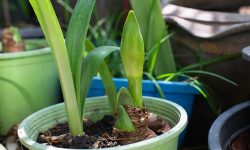Choosing the Right Location for Butterfly Bush
The butterfly bush grows best in sunny locations where it can receive at least six hours of direct light each day. Sunlight plays an essential role in flower production and overall plant health. Without sufficient sun, the bush may grow weak stems and produce fewer blooms. Therefore, selecting an open, bright spot in your garden is the first step toward success.
Soil conditions also matter when planting a butterfly bush. It prefers well-drained soil, as standing water can cause root rot. If your soil is heavy or clay-based, consider adding compost or sand to improve drainage. A slightly acidic to neutral pH supports nutrient absorption and encourages stronger root development. Good soil preparation ensures that your butterfly bush has a strong foundation for long-term growth.
Wind exposure should also be considered when selecting a location. Although the butterfly bush can handle breezy conditions, planting it in a sheltered spot helps prevent damage to young stems. Gardens that offer sun, good soil, and moderate protection provide the best environment for butterfly bushes. Once planted in the right place, the bush will reward you with strong growth and vibrant blooms year after year.
Soil Preparation and Planting Techniques
Choosing the Right Soil Conditions
Preparing the soil correctly before planting a butterfly bush is essential to ensure vigorous growth and long-lasting blooms. These shrubs thrive in well-draining soil, as they are highly susceptible to root rot in overly wet conditions. Sandy or loamy soil types enriched with organic matter provide the perfect environment. Before planting, loosen the soil to a depth of 12–15 inches to encourage deep root penetration and prevent waterlogging. Amending heavy clay soil with coarse sand or compost improves drainage and aeration, creating a healthier root zone. Additionally, testing soil pH is recommended, as butterfly bushes prefer slightly acidic to neutral soil (around 6.0–7.0).
Another vital step is removing weeds and stones from the planting area, as they compete for nutrients and water. Mixing in aged manure or well-rotted compost boosts soil fertility, ensuring young plants receive the nutrients they need for robust growth. A light application of balanced, slow-release fertilizer at the base of the planting hole can further enhance nutrient availability. By creating a nutrient-rich, aerated foundation, gardeners set the stage for a butterfly bush that establishes quickly, produces vibrant blooms, and attracts pollinators throughout the growing season.
Effective Planting Techniques
Proper planting techniques play a crucial role in how well a butterfly bush adapts to its environment. Start by digging a hole that is twice as wide but equal in depth to the plant’s root ball. This ensures roots spread easily into the loosened soil. Place the shrub in the hole, making sure the crown (where the stem meets the roots) sits level with the soil surface to prevent water from pooling around the base. Backfill the hole gradually, pressing down lightly to remove air pockets that can hinder root contact with soil. Once planted, water thoroughly to settle the soil and hydrate the roots.
Mulching around the base with organic material such as shredded bark or straw helps conserve moisture, regulate soil temperature, and suppress weed growth. However, avoid piling mulch directly against the stem, as this can encourage rot. During the first few weeks, maintain consistent moisture until the plant is established, after which butterfly bushes tolerate moderate drought. Spacing plants about 5–10 feet apart, depending on the variety, allows for proper air circulation and prevents overcrowding. By following these planting practices, gardeners ensure their butterfly bush develops strong roots and produces abundant flowers that attract butterflies, bees, and hummingbirds year after year.
Watering Needs for Healthy Growth
Butterfly bushes prefer moderate watering, especially during the first growing season. Young plants require consistent moisture to develop strong root systems. Water deeply once or twice a week, depending on rainfall and soil conditions. Shallow watering can lead to weak roots, so always aim for slow, thorough soaking.
Once established, butterfly bushes become quite drought-tolerant. Mature plants usually need supplemental watering only during prolonged dry periods. Overwatering can be more harmful than underwatering, as it increases the risk of root diseases. Monitoring soil moisture with your hands can help you avoid excessive watering. If the top inch of soil feels dry, it is time to water.
Mulching helps maintain even soil moisture and reduces evaporation, especially in hot climates. Organic mulch, such as shredded bark or compost, also improves soil fertility as it breaks down. By balancing watering practices with natural mulching, gardeners can maintain healthy growth without stressing the plant. Proper hydration supports abundant blooms and creates an inviting habitat for pollinators.
Fertilizing Butterfly Bushes for More Blooms
Fertilizing butterfly bushes correctly encourages lush growth and vibrant flowers. While the plant is not overly demanding, feeding it during the growing season boosts flower production. Use a balanced, slow-release fertilizer applied in spring as new growth emerges. This provides essential nutrients for developing shoots and buds.
During summer, you can supplement with a water-soluble fertilizer to encourage continuous blooming. Avoid high-nitrogen fertilizers, as they promote leafy growth at the expense of flowers. Instead, choose a formula with higher phosphorus to support bud formation. Over-fertilization can stress the plant, so always follow package instructions carefully.
Organic options such as compost or well-rotted manure also work well for butterfly bushes. These natural amendments improve soil health while delivering nutrients gradually. Consistent but moderate feeding keeps the plant strong without overwhelming it. Fertilized correctly, your butterfly bush will reward you with dense clusters of fragrant blooms that attract butterflies, bees, and hummingbirds.
Pruning Techniques for Long-Lasting Blooms
Pruning is one of the most important tasks in caring for a butterfly bush. Regular pruning not only shapes the plant but also stimulates fresh growth and flower production. In late winter or early spring, cut the bush back to about one-third of its size. This encourages new shoots that will bear the season’s blooms.
Deadheading, or removing spent flowers, is equally beneficial during the growing season. By cutting off faded clusters, you prevent seed formation and redirect energy to new blooms. This simple practice extends the flowering period and keeps the plant looking tidy. Consistent deadheading ensures a steady display of colorful blossoms.
Older butterfly bushes may require rejuvenation pruning. Cutting the plant back hard every few years helps maintain vigor and prevents it from becoming woody. Proper pruning techniques ensure that your butterfly bush remains healthy, productive, and visually appealing. With well-timed cuts, you can enjoy long-lasting blooms and a thriving pollinator garden.
Seasonal Care for Butterfly Bush
Spring Care for Butterfly Bush
In spring, butterfly bushes awaken from winter dormancy and begin producing new shoots. This is the perfect time to prune the plant back to encourage healthy growth and prepare it for a season full of blooms. Gardeners should remove any dead or damaged branches, cutting them down to the base or to a point where strong new shoots are forming. This not only improves air circulation but also helps shape the plant for a balanced look. Adding compost or a slow-release fertilizer in early spring gives the shrub the nutrients it needs to support vigorous foliage and flower production.
Watering in spring should be moderate, as butterfly bushes do not like soggy soil. If spring rains are sufficient, little additional watering is required. However, in drier regions, consistent moisture will help young shoots establish well. Mulching around the base of the plant helps retain soil moisture and suppress weeds, while also protecting the shallow roots from unexpected late frosts. By giving attention to pruning, feeding, and watering during spring, you can set a strong foundation for abundant summer blooms that will attract pollinators all season long.
Summer Care for Butterfly Bush
Summer is the peak season for butterfly bushes, when their colorful, fragrant blooms attract butterflies, bees, and hummingbirds. To keep the plant looking fresh and blooming continuously, gardeners should deadhead spent flowers regularly. This prevents the plant from directing energy into seed production and encourages it to produce new blossoms. During extended dry periods, butterfly bushes need consistent watering. Deep watering once or twice a week is more effective than frequent shallow watering, as it helps roots grow deeper and stronger.
Fertilizing in mid-summer with a balanced liquid fertilizer can give an extra boost to encourage more flowers. However, over-fertilization should be avoided, as it may produce excessive leafy growth at the expense of blooms. Keeping the area around the plant weed-free ensures that nutrients and water go directly to the butterfly bush rather than competing plants. With proper summer care, your butterfly bush will thrive, producing abundant flower spikes that transform your garden into a pollinator haven and provide continuous beauty throughout the warmest months of the year.
Fall Care for Butterfly Bush
As the weather cools, butterfly bushes prepare for dormancy. Fall care is essential for helping the shrub transition into winter while maintaining its long-term health. Gardeners should continue deadheading flowers until the first frost, though the blooms will naturally begin to slow down. Watering should also be gradually reduced, but do not let the soil completely dry out, especially in areas where autumn is relatively dry. Removing weeds and fallen leaves around the base will reduce the risk of pests and fungal diseases during the cooler months.
Avoid heavy pruning in fall, as cutting back too much can expose the plant to frost damage. Instead, focus on light shaping and removing any weak or diseased branches. Adding a fresh layer of mulch around the base of the plant will insulate the roots and regulate soil temperature as winter approaches. Fall is also an excellent time to apply compost or organic matter, giving the soil added nutrients that will benefit the plant when it reawakens in spring. With these simple steps, your butterfly bush will stay strong and resilient, ready to burst into color again next year.
Winter Care for Butterfly Bush
In winter, butterfly bushes go dormant, conserving their energy for the growing season ahead. In most climates, the shrub can survive without much intervention, but winter care is important in colder regions. A thick layer of mulch—around 4 to 6 inches—around the base helps insulate the roots from freezing temperatures. In areas with harsh winters, covering the plant with burlap or frost cloth provides added protection against snow and icy winds.
Avoid watering excessively during winter, as the plant requires very little moisture when dormant. Overly wet soil can cause root rot. If you live in a mild climate, butterfly bushes often retain their woody structure through the season, and heavy pruning should be postponed until early spring. In colder zones, the top growth may die back completely, but the roots usually survive and send up fresh shoots once the weather warms. With proper winter care, your butterfly bush will remain healthy and well-protected, ensuring it rebounds beautifully when the growing season returns.
Pest and Disease Management
Common Pests Affecting Butterfly Bush
Butterfly bushes are generally hardy plants, but they can still attract certain pests. Aphids are among the most common, feeding on the plant’s sap and causing curled or yellowing leaves. Spider mites may also appear during hot, dry conditions, leaving fine webbing on foliage and weakening growth. Whiteflies and caterpillars can occasionally infest young leaves and flowers, reducing the plant’s overall vigor. To manage these pests, regularly inspect the plant, especially the undersides of leaves. A strong spray of water can dislodge small infestations, while insecticidal soap or neem oil provides a natural control option. Encouraging beneficial insects such as ladybugs and lacewings also helps keep pest populations in check. By addressing issues early, gardeners can maintain healthy butterfly bushes that continue to thrive and attract pollinators.
Preventing and Treating Diseases
Although butterfly bushes are resistant to many diseases, improper growing conditions can still lead to problems. Root rot may develop if the soil is poorly drained, causing wilting and yellowing leaves. Powdery mildew can also appear, especially in humid climates, leaving a white, dusty coating on foliage. To prevent disease, plant butterfly bushes in well-draining soil with good air circulation. Avoid overhead watering, which keeps leaves wet and creates a favorable environment for fungal infections. If mildew does occur, prune affected branches and apply a fungicide when necessary. Regular pruning also promotes airflow, reducing the likelihood of disease spread. Maintaining a balanced watering routine and avoiding overcrowding ensures strong, disease-resistant growth. By combining preventive care with timely treatments, gardeners can enjoy vibrant, long-lasting blooms without serious health issues.
Attracting Pollinators with Butterfly Bush
One of the greatest joys of growing butterfly bushes is watching them attract pollinators. The nectar-rich blooms are irresistible to butterflies, bees, and hummingbirds. Planting your bush in sunny, open areas makes it easier for pollinators to find. The long flowering season provides a reliable food source throughout summer.
Combining butterfly bushes with other pollinator-friendly plants enhances their appeal. Flowers such as coneflowers, lavender, and salvia complement the bush while offering variety. Diverse planting creates a richer habitat, supporting more species of pollinators. This increases garden activity and boosts the health of local ecosystems.
Avoiding pesticide use is critical when trying to attract pollinators. Chemicals may harm the very creatures you wish to invite. Instead, rely on natural pest control methods and biodiversity. A butterfly bush cared for in this way becomes not only a centerpiece of beauty but also a thriving hub for pollinators in your garden.
Companion Planting with Butterfly Bush
Companion planting with butterfly bush helps create a thriving garden where pollinators feel welcome and supported. While butterfly bush offers nectar-rich blooms that attract butterflies, bees, and hummingbirds, it lacks pollen and foliage support for other beneficial insects. By pairing it with complementary plants, you provide a more balanced habitat. These combinations not only enhance biodiversity but also extend the blooming season in your garden. A well-planned mix ensures continuous food sources, which is essential to keep pollinators active from spring to fall.
Plants with different flowering times work especially well with butterfly bush. Early bloomers such as lavender and salvia offer nectar before the butterfly bush begins flowering, while late-season bloomers like coneflowers and asters keep the garden lively after its peak. Pairing butterfly bush with native wildflowers can also create a pollinator-friendly landscape that supports local ecosystems. These plant partners provide pollen and shelter, balancing what butterfly bush alone cannot provide. The mix creates a colorful, textured display that looks appealing and feels natural in design.
Companion planting also helps maintain healthier garden conditions. Tall ornamental grasses planted nearby provide wind protection for delicate butterflies and offer overwintering shelter for insects. Herbs like oregano and thyme not only attract pollinators but also repel unwanted pests. Together, these combinations increase the diversity of beneficial insects, making your garden more resilient. When carefully selected, companion plants enhance soil health, reduce pest pressure, and ensure pollinators always find something in bloom. This synergy makes your butterfly bush planting both beautiful and ecologically balanced.
Design Tips for Butterfly Bush in Gardens
When planning to include butterfly bush in your landscape, consider its placement carefully. These shrubs grow vigorously, often reaching heights of six to ten feet, depending on the variety. Position them in sunny spots where they can be the centerpiece of a border or backdrop for shorter plants. Their long, arching flower spikes not only attract butterflies and hummingbirds but also create a dynamic vertical accent in mixed beds.
Color selection is another important design element. Butterfly bushes are available in shades of purple, pink, white, and yellow, offering flexibility to match your garden’s palette. Pair deep purple or violet cultivars with lighter-colored flowers for striking contrast, or choose white and pale pink varieties to complement pastel-themed plantings. To maximize visual impact, plant them in groups of three or five, allowing the blooms to create a more cohesive, eye-catching display.
Beyond aesthetics, butterfly bushes can be combined with plants that extend seasonal interest. For example, pairing them with ornamental grasses, coneflowers, or black-eyed Susans ensures texture and color continuity throughout the growing season. Their tolerance for poor soils makes them excellent companions in low-maintenance landscapes. Additionally, placing them near patios or pathways allows you to enjoy the pollinators they attract up close. With thoughtful design choices, butterfly bush becomes not just a pollinator magnet but also a defining feature that adds structure, vibrancy, and movement to any garden setting.
Common Problems and How to Solve Them
Yellowing Leaves
Yellowing leaves on a butterfly bush can be a sign of water stress or nutrient deficiency. If the soil is too wet, the roots may not receive enough oxygen, leading to chlorosis and leaf drop. On the other hand, prolonged drought without deep watering can also cause stress, resulting in yellow leaves. To address this issue, check the soil moisture before watering and ensure the plant is not sitting in poorly drained soil. Amending the soil with compost and ensuring proper drainage can prevent waterlogging.
In addition, a lack of essential nutrients such as nitrogen, iron, or magnesium may contribute to yellowing. Applying a balanced slow-release fertilizer in early spring and again in midsummer helps restore leaf color and plant vigor. For potted butterfly bushes, replenish the soil every couple of years and provide regular feeding. By correcting watering habits and nutrient balance, the plant will quickly regain healthy green foliage.
Wilting or Drooping Stems
Wilting stems often indicate inconsistent watering or extreme heat stress. Butterfly bushes thrive in full sun, but during prolonged heatwaves, the roots may struggle to supply enough water to the top growth. To fix this, water deeply once or twice a week rather than lightly every day, allowing the soil to retain moisture longer. Applying a layer of organic mulch around the base also helps keep the roots cool and reduces evaporation.
If wilting occurs even with proper watering, inspect the plant for root damage or rot caused by overly compact or waterlogged soil. In such cases, aerating the soil and removing damaged roots can help recovery. For container-grown butterfly bushes, repotting into a fresh, well-draining mix can solve persistent wilting issues. Once stabilized, the plant will bounce back with strong upright stems.
Pests and Diseases
Although butterfly bushes are relatively low-maintenance, they can attract pests like spider mites, aphids, and caterpillars. Infestations typically cause stippling, curled leaves, or sticky residue on the foliage. A strong spray of water often dislodges minor infestations, but for larger problems, use insecticidal soap or neem oil. Introducing beneficial insects such as ladybugs can also help control pests naturally. Regularly checking the undersides of leaves ensures early detection before the problem escalates.
Diseases such as root rot and fungal leaf spots may occur in overly damp conditions. Avoid overhead watering and prune overcrowded branches to improve air circulation. If fungal spots appear, remove and discard affected leaves to prevent spread. In severe cases, apply an organic fungicide. Keeping the plant in full sun with well-drained soil is the best long-term prevention strategy against most diseases. With proper care, your butterfly bush can thrive pest- and disease-free.
FAQ about Caring for Butterfly Bush
How often should I water my butterfly bush?
Butterfly bushes are drought-tolerant once established, but young plants need consistent watering. Water deeply once or twice a week during the first growing season to help roots establish. After that, natural rainfall is usually enough, except in prolonged dry periods when supplemental watering may be necessary.
Do butterfly bushes need fertilizer?
Butterfly bushes are not heavy feeders and generally thrive in average garden soil. However, applying a balanced, slow-release fertilizer in early spring can boost growth and flowering. Avoid over-fertilizing, as too much nitrogen encourages foliage at the expense of blooms, reducing the plant’s attractiveness to pollinators.
Should I cut back my butterfly bush in winter?
Yes, pruning is essential for butterfly bush health and abundant blooms. In colder climates, cut the plant back to about 12 inches in late winter or early spring before new growth begins. This encourages vigorous shoots and larger flower clusters, keeping the plant neat and manageable.
Do butterfly bushes attract pests or diseases?
Butterfly bushes are relatively low-maintenance but can occasionally face spider mites, aphids, or fungal issues. Proper spacing, good airflow, and avoiding overhead watering help prevent most problems. If pests appear, insecticidal soap or a strong stream of water can control them effectively without harming pollinators.
Can I grow butterfly bushes in containers?
Yes, dwarf varieties of butterfly bush grow well in large containers, making them suitable for patios or small gardens. Ensure the container has good drainage, use high-quality potting mix, and water regularly. Container-grown plants may require more frequent watering and occasional feeding compared to those grown in the ground.
Conclusion
Growing butterfly bushes can transform your garden into a lively sanctuary filled with color and fluttering wings. With the right care, pruning, and thoughtful companion planting, these resilient shrubs reward you with season-long beauty and pollinator activity. While occasional pests or issues may arise, most are easily managed with simple, proactive steps. By understanding their needs and providing proper maintenance, you’ll enjoy healthy plants that thrive year after year. Let butterfly bushes inspire joy and bring lasting vibrance to your outdoor space.







